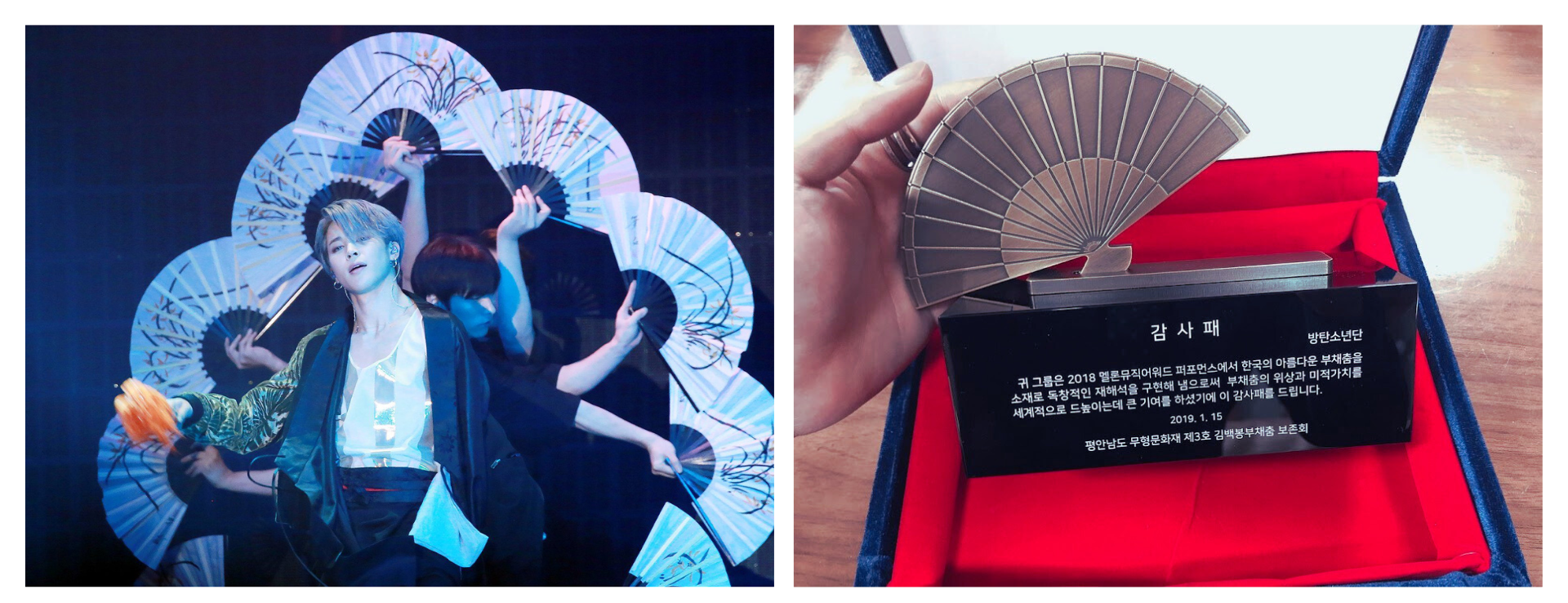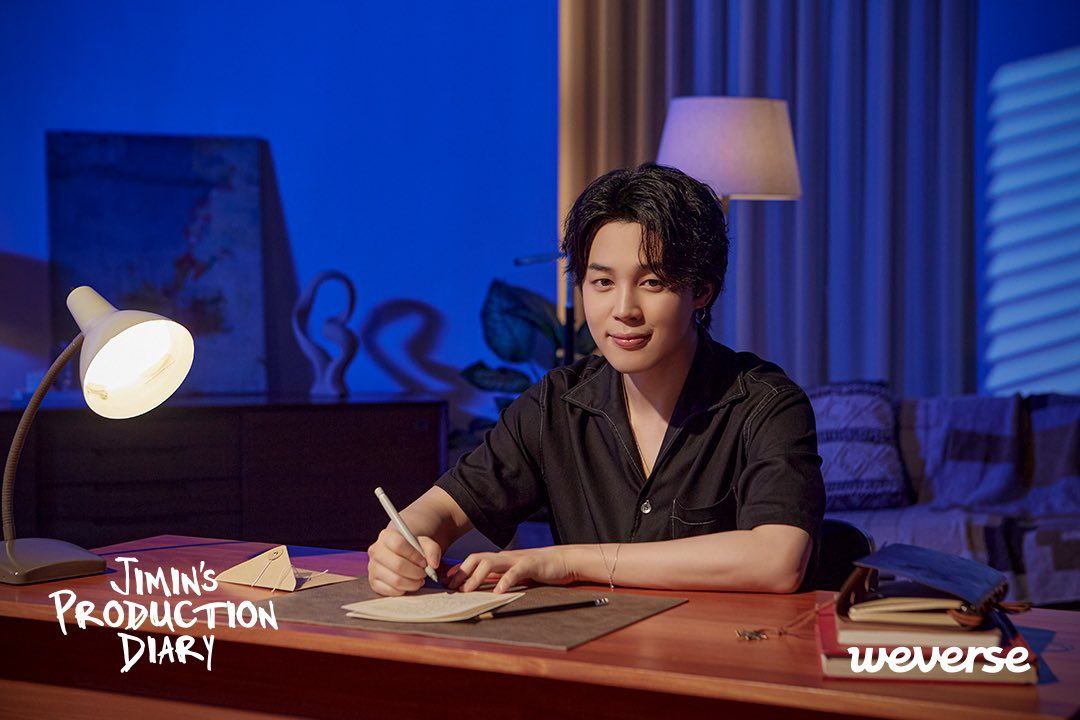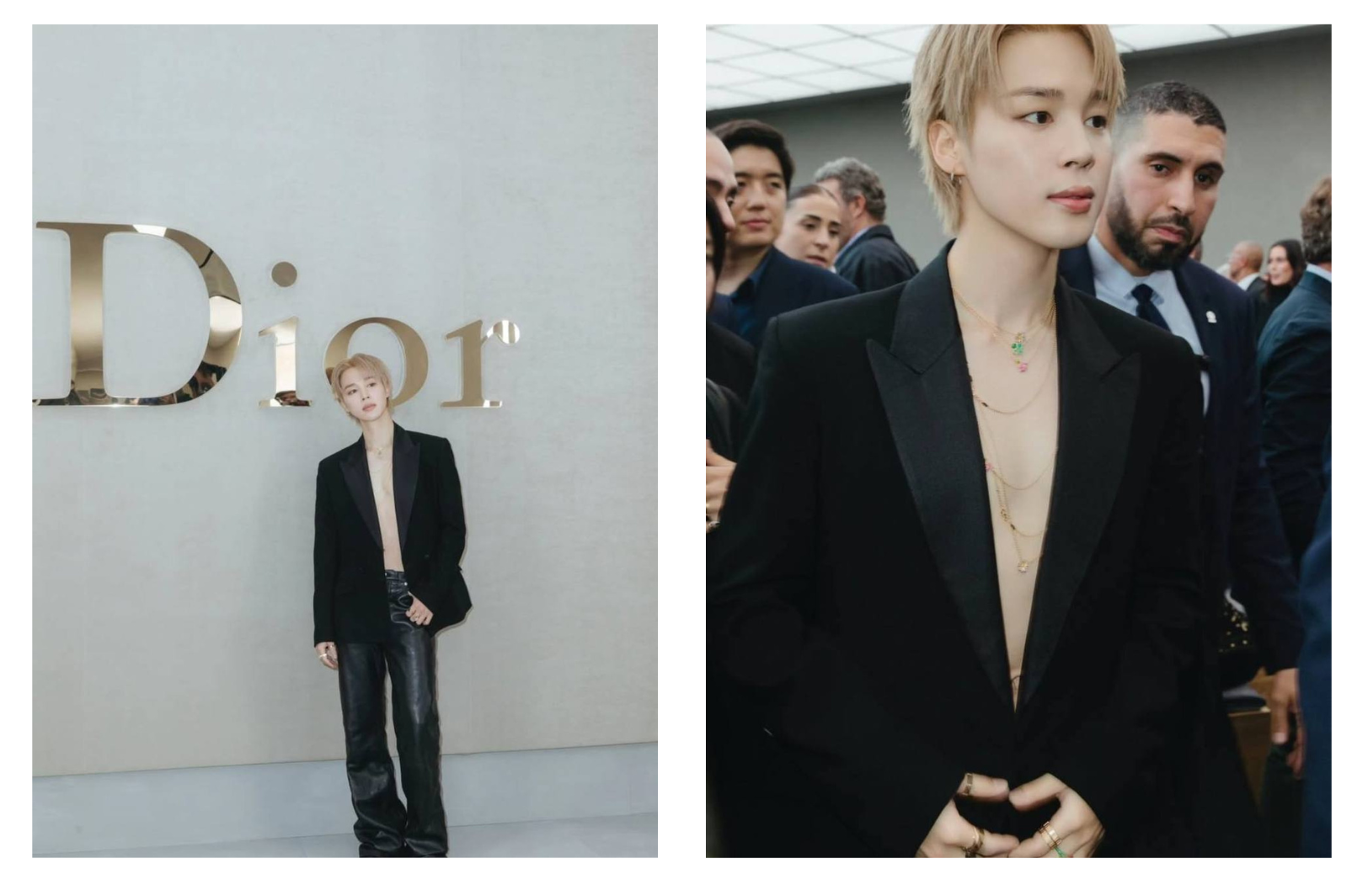The experience of BTS and the solo projects of its members, including Park Jimin, have long evolved into a multifaceted cultural phenomenon that extends far beyond music. «I argue that the idea of expandability is key to understanding K-pop», notes Wonseok Lee, a postdoctoral associate at the Council on East Asian Studies at Yale University, whose research specializes in Korean popular music, globalization, and cultural identity, in an exclusive comment for this article.
Drawing on Lee's insights, obtained in late September 2025, we will trace how this idea of expandability operates through the example of Jimin. His career demonstrates how a contemporary artist consistently pushes boundaries — through a modern reinterpretation of national traditions, a transformation of his role within the K-pop system, and the formation of a new ethics of influence.
Reimagining Tradition: A New Perspective on Buchaechum
What if a traditional fan dance suddenly began to speak the language of contemporary performance? This is precisely what happened at the 2018 Melon Music Awards when Jimin presented his version of buchaechum (부채춤, the traditional Korean dance with fans), breathing new life into the centuries-old art form.
Gone from the stage were the vibrant hanbok and the fluid, water-like movements. In their place, the audience witnessed a dynamic, dramatic dance with an androgynous aesthetic, where sharp gestures and sculptural poses replaced the traditional circular trajectories. The choice of a stylized hanbok instead of the classic one, combined with a male solo performance—where female dancers traditionally take the stage—became a bold artistic statement that redefined the canon.
This creative step did not go unnoticed.Wonseok Lee confirmed in his interview: «Tradition is not a fixed concept but fluid. Jimin’s performance is a good example of how Korean tradition is reinterpreted and recreated in contemporary Korean society. … For the global audience, his performance gives a chance to discover a new aesthetic of Korean culture by filling the gap between Korean tradition and contemporary K-pop. For the Korean audience, his performance demonstrates the potential of Korean tradition within the global popular music scene».

However, the ultimate recognition came from the approval of tradition's gatekeepers. As reported by South Korean media, the Kim Baek Bong Korean Fan Dance Conservation Society presented Jimin with a commemorative plaque. The award citation states that his performance «made a significant contribution to enhancing the status and aesthetic value of the Korean fan dance worldwide».
Thus, in just a few minutes on stage, Jimin managed to become a bridge between eras — not by simplifying tradition, but by translating it into a language understandable to a global audience. This bold experiment with tradition became one of many in his career, where each subsequent step expanded the perception of what a K-pop artist is capable of. His solo project became a significant milestone on this path.
Role Transformation: From Performer to Auteur
Jimin's solo debut was more than just a new project; it became a space for personal and professional breakthrough where he, for the first time in full, emerged as the author of his own artistic statement. If his work with tradition demonstrated his ability to expand external forms, his solo project became a journey inward — an expansion of the artist's inner space.
The documentary project «Jimin's Production Diary» served as central testimony to this transformation. Unlike typical behind-the-scenes content, the viewer was presented not with a polished final product, but with a living, strenuous creative process. The camera captured moments of doubt and endless searching — the work on vocals, the refining of lyrics and melodies, the emotional involvement in crafting the album's sonic canvas.
This artistic choice works to dismantle stereotypes about K-pop. As Lee notes: «Jimin is one of those artists who clearly demonstrates why the pervasive stereotype of K-pop as a standardized product, a copycat of Anglo-American popular music, is derived from a shallow understanding of the genre».

The artist's personal experience confirms this thesis. As Jimin himself admitted, he did not expect his first album to be so candid and had initially envisioned his solo work within the more universal, stage-oriented aesthetic of "Filter." However, the creative process became a journey into his inner self, resulting in surprisingly personal works — a genuine challenge for an artist accustomed to working within a group.
Jimin's path is part of a systemic shift in K-pop. As Lee points out, the industry is increasingly valuing artists' authorial participation. Companies, following a «Two Birds with One Stone» strategy, purposely nurture these skills, allowing them to combine economic efficiency with creative uniqueness.
Thus, Jimin's solo project marks a significant personal milestone: the transcendence of the boundary between the public idol and an artist capable of profound personal and authorial expression. His experience shows that contemporary K-pop provides a space for artists not only for virtuosic performance but also for sincere creative self-revelation. This new facet of his work has enriched his already multifaceted image, amplifying his influence in new spheres.
New Frontiers of Influence: From Music to Social Practices
By offering a glimpse into his creative laboratory, Jimin revealed a new facet of himself to the world—that of an artist-auteur. This creative sincerity, which became the key to understanding his artistic identity, allowed for a fresh perspective on both his persona and the nature of the "Jimin effect"—a phenomenon that has made him a recognizable figure far beyond the realm of music. His growing influence in fashion and the social sphere is now based not merely on status, but primarily on this personal authenticity.
Influence on Aesthetics: A Style Icon from Dior
One of Jimin's first official engagements following his return from military service was his appearance at the Dior show in October 2025 as a Global Ambassador. This highly anticipated return to the international stage immediately transcended the boundaries of an ordinary fashion event, demonstrating the artist's enduring global influence. According to analytical data from the Korean outlet StarNews, his presence generated a record-breaking Media Impact Value (MIV) of $33.8 million (approximately 48 billion won) for the brand—the highest figure ever recorded for a K-pop artist from a single Fashion Week event.
The success of this collaboration is rooted in a deep aesthetic alignment: Jimin's unique style and expressive physicality organically embodied Dior's contemporary vision of luxury. This alliance confirmed that the artist is perceived by the industry not merely as a popular entertainer, but as a full-fledged trendsetter whose style choices influence fashion on a global scale.

Influence on Art: The Image as Archetype
The ability of his image to be translated across different media demonstrates its archetypal power. The artist Lee.K creates viral illustrations that capture and hyperbolize Jimin's unique physicality, transforming it into a distinct artistic language. An even more telling example is the animated film «K-Pop Demon Hunters»": its creator, Maggie Kang, publicly acknowledged that the character Baby Saja was directly inspired by Jimin. These examples prove that his image possesses the qualities of a modern archetype — it has become a «building block» for other artists' creativity, a universal code that can be used to generate new meanings and aesthetics.

Influence on Ethics: The Philosophy of Quiet Action
The most organic extension of this cohesive image has been Jimin's philanthropy. His long-standing practice — regular donations, often made without public announcements — coupled with his inclusion in The Givers 50 ranking in October 2025, attests to a systematic approach to social responsibility.
The example set by an artist grounded in principles of mindfulness has created a new model of influence. Upon learning of his actions, fans worldwide organize their own initiatives — from charitable fundraisers to volunteer activities.
This values-based form of influence transcends traditional models. Wonseok Lee notes: «The connection between K-pop artists and fans goes way beyond parasocial relationships, turning into mutual inspiration».
As Lee emphasizes, this kind of connection is built on «mutual inspiration and solidarity», where the artist's personal stance becomes a catalyst for tangible social action.
Jimin's creative journey has become a living illustration of a major trend in contemporary culture.
Wonseok Lee’s idea of «expandability» perfectly explains the K-pop phenomenon. «Since the beginning, K-pop has pushed its boundaries», Wonseok Lee notes. Jimin and BTS are among the primary conductors of this philosophy. Their experience proves that old binaries like «tradition versus modernity» or «the local versus the global» have simply ceased to be effective.
Jimin's example demonstrates that a modern Korean artist is no longer confined to a single role. From traditional dance to authorial music, from fashion runways to philanthropy — his creative path vividly demonstrates what «expandability» means in practice. He can simultaneously be a guardian of traditions, an innovator, and a social actor, constantly expanding our understanding of what a pop star can be.
How about this article?
- Like5
- Support0
- Amazing0
- Sad0
- Curious0
- Insightful0


